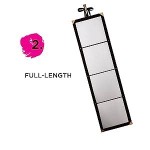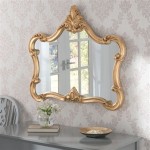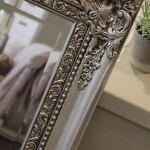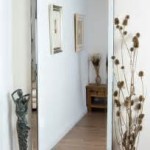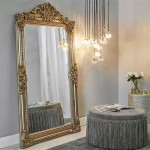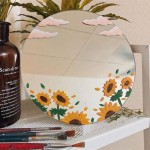Hardware to Hang Mirrors: A Guide to Choosing the Right Tools for the Job
Mirrors can be a transformative element in any room, adding depth, light, and visual interest. However, getting them hung securely and safely is crucial to avoid potential damage or accidents. The right hardware is essential for a successful installation, and understanding the available options can ensure a smooth and stress-free process. This guide explores the different types of hardware used for hanging mirrors, providing insights into their strengths, weaknesses, and suitability for varying mirror sizes and wall types.
Types of Hanging Hardware
The world of mirror-hanging hardware is surprisingly diverse, catering to various mirror sizes, weights, and wall materials. Here's a breakdown of the most common options:
1. D-Rings and Wire
D-rings are a classic and versatile choice for hanging mirrors. Typically made of metal, these rings are attached to the back of the mirror and connected to a wire or cable. The wire is then hooked over a nail or screw in the wall. D-rings are ideal for lightweight mirrors, offering flexibility in positioning and allowing for easy adjustments. However, they may not be suitable for heavier mirrors as the wire's weight distribution can be uneven, potentially leading to instability.
2. Hanging Hooks
Hanging hooks are a simple and reliable option for heavier mirrors. These hooks are attached to the back of the mirror with screws or adhesive and come in various sizes and materials. Some hooks can be directly screwed into the wall while others require a mounting plate for additional support. These hooks offer strong support and are particularly useful for mirrors with irregular shapes or where a centered hanging point is not feasible.
3. Z-Clips
Z-clips, known as French cleats, provide a strong and secure method for hanging mirrors. These clips consist of two pieces: a "Z" shaped bracket that mounts to the wall and a corresponding matching bracket that is attached to the back of the mirror. The two pieces interlock, creating a secure and adjustable connection. Z-clips are ideal for heavy mirrors and are particularly popular for large, framed mirrors. They allow for easy removal and re-installation without damaging the wall.
Choosing the Right Hardware
Choosing the appropriate hardware depends on several factors, including the mirror's size, weight, and wall material. To make an informed decision, consider the following:
1. Mirror Weight and Size
The mirror's weight is the primary factor influencing hardware selection. Lightweight mirrors can be securely hung with D-rings and wire, while heavier mirrors require sturdier options like hanging hooks or Z-clips. The size of the mirror also plays a role; larger mirrors may need additional support and stronger hardware to ensure stability.
2. Wall Material
Different wall materials require specific hardware for proper installation. Drywall is a common wall material in most homes and is generally suitable for most types of hanging hardware. However, it's essential to choose hardware that is compatible with the wall's composition. For example, for plaster walls, it's crucial to use hardware designed for plaster to avoid cracks or damage.
3. Desired Hanging Style
The desired hanging style can influence the type of hardware used. D-rings and wire offer flexibility in positioning, allowing for adjustments based on the mirror's placement. Hanging hooks provide a more secure and fixed position, while Z-clips allow for easy removal and re-installation.
Safety Considerations
Ensuring a mirror's secure installation is crucial for both aesthetic and safety reasons. Before hanging a mirror, consider the following safety tips:
1. Use appropriate hardware
Overlooking the importance of using appropriate hardware can lead to accidents and damages. Always choose hardware that is designed for the mirror's weight and wall material.
2. Locate studs
For maximum stability, use screws or anchors that are secured into wall studs. This is particularly important for heavy mirrors or those located in high-traffic areas.
3. Test for stability
After installation, gently test the mirror's stability by pushing it lightly. If it feels unstable or wobbly, it may need additional support or adjustments.
By understanding the different types of hanging hardware and their respective benefits, you can confidently choose the best tool for the job. Remember to prioritize safety and stability when selecting hardware, ensuring your mirrors are securely and beautifully displayed for years to come.

How To Hang A Heavy Mirror The Home Depot

Heavy Picture Mirror Hanging Kit 50 Kg
How To Hang A 100 Pound Mirror On Drywall Quora

How To Hang A Heavy Mirror With Pictures Wikihow

How To Hang Heavy Mirrors Frames Without Nails 3m

Heavy Picture Mirror Hanging Kit 50 Kg

Picture Mirror Hangers 25kg Rated Heavy Duty Frame Wall Hanging J Hooks Pack X 2

How To Hang A Heavy Mirror Or Picture True Value

Over The Door Hanging Mirrors A Comprehensive Guide

How To Hang A Heavy Mirror The Home Depot


